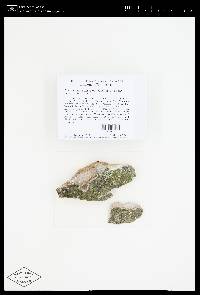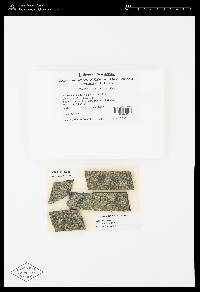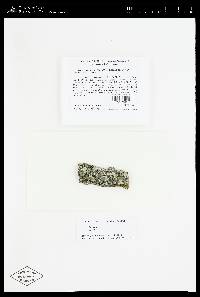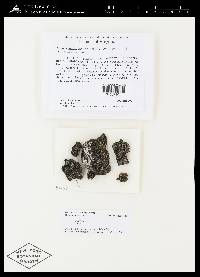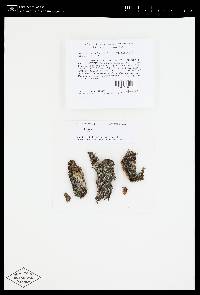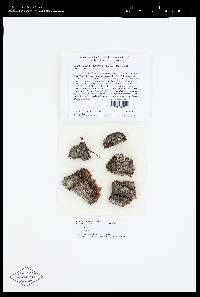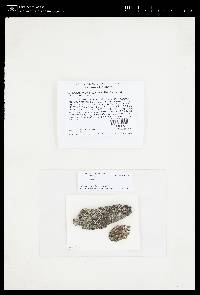
Consortium of Lichen Herbaria
- building a Global Consortium of Bryophytes and Lichens as keystones of cryptobiotic communities -
- Home
- Search
- Images
- Species Checklists
- US States: O-Z >
- US National Parks
- Central America
- South America
- US National Parks
- Southern Subpolar Region
|
|
|
|
Family: Leprocaulaceae
[Lepraria adhaerens K. Knudsen, Elix & Lendemer] |
Nash, T.H., Ryan, B.D., Gries, C., Bungartz, F., (eds.) 2007. Lichen Flora of the Greater Sonoran Desert Region. Vol 3. Thallus: crustose, leprose; without lobes, diffuse, without a distinct medulla or hypothallus, dispersed or contiguous, adhering to lichens and mosses, eventually forming an areolate crust which sometimes spreads over several meters, less than 1 mm thick, composed of fused granules, the upper layer loose surface: blue to lead-gray or bluish green, but eventually with a dull brown hue soredia: granules lumpy, adhering to one another, 40-100 µm in diam., with a colorless outer layer comprised of uneven and indistinct gelatinized hyphae or of irregular, paraplectenchymatous hyphae, 2-4(-5) µm diam., one to two layers thick, surrounding an algal core, without projecting hyphae, but frequently producing thin, colorless ±thick-walled hyphae, 2-3 µm in diam., acting as anchors or rhizines medulla: lacking, but eventually in older thalli forming a necral lower layer of gelatinized granules incorporating host lichens and mosses mixed with mineral grains of the substrate lower surface: lacking Spot tests: K- C-, KC-, P+ orange, UV- Secondary metabolites: pannarin, zeorin, ±atranorin (minor), and often with accessory norpannarin (minor), dechloropannarin (minor) and hypopannarin (minor). Ecology and substrate: on soil and acid or carbonate rock, usually adhering to lichens and mosses and even filamentous algae World distribution: North America (Pennsylvania, Missouri and California) Sonoran distribution: southern California (Santa Monica Mountains south to coastal San Diego), below 500 meters. Notes: Lepraria adhaerens has a distinctive chemistry of pannarin and zeorin. The etymology of the adhaerens refers to the adherence of granules to one another and to mosses and other lichens. |
|
|
|
Powered by Symbiota






